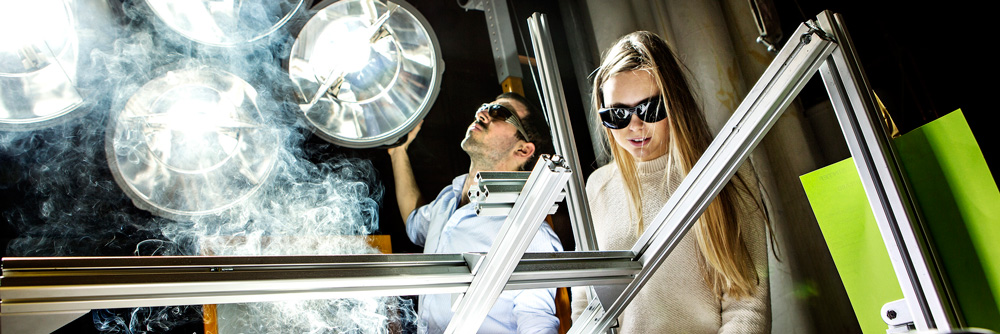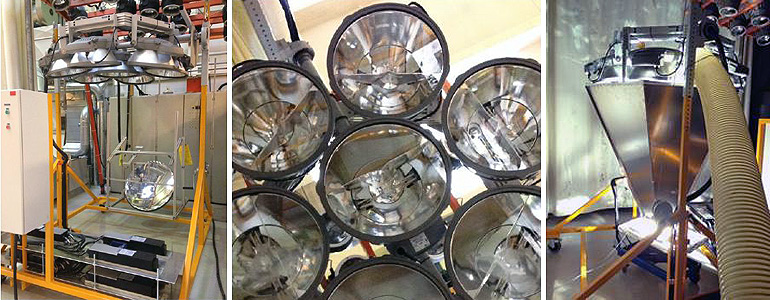Solar Simulator Laboratory
Solar Simulator Laboratory
Outdoor testing of solar concentrators depends on the season and on the daily weather. The sun intensity in Trondheim during summer time is quite good (often 900 W/M2), as the air is most often clean and dry. The limiting factor is the low number of sun-hours, since we often have cloudy weather and the winter is dark. Heat storages and some heat transfer methods can be tested with artificial heating indoors. For absorber testing, a solar simulator is needed.

An assembly of 7 lamps have been constructed, similar to a setup from Massachusetts Institute of Technology, but with stronger lamps:
- R3 Maxi metal halide lamps with HQI-TS 2000 W/D/S bulbs
- The lamps in the hexagonal assembly can be oriented individually
- The whole assembly can be lifted and tilted, to direct the rays at different angles
- 2 KW on each lamps generate a heat, and the lamps are cooled with a fan
A simple cone shaped concentrator can be attached, made of flat MIRO panels (95% reflectance, to provide some reflection effects onto a small area (40 cm diameter). Intensity measurements have been estimated with a thermal method. The intensity is largest at the centre (about 70 kW/m2) and decreases towards the rim (about 50 kW/m2).

Visiting address
Varmeteknisk lab (Thermal Engineering lab)
Kolbjørn Hejes v. 1A, NO-7491 Trondheim
Research applications
- Solar dryer
- Heat absorbers
- Solar fryer
- Heat battery
